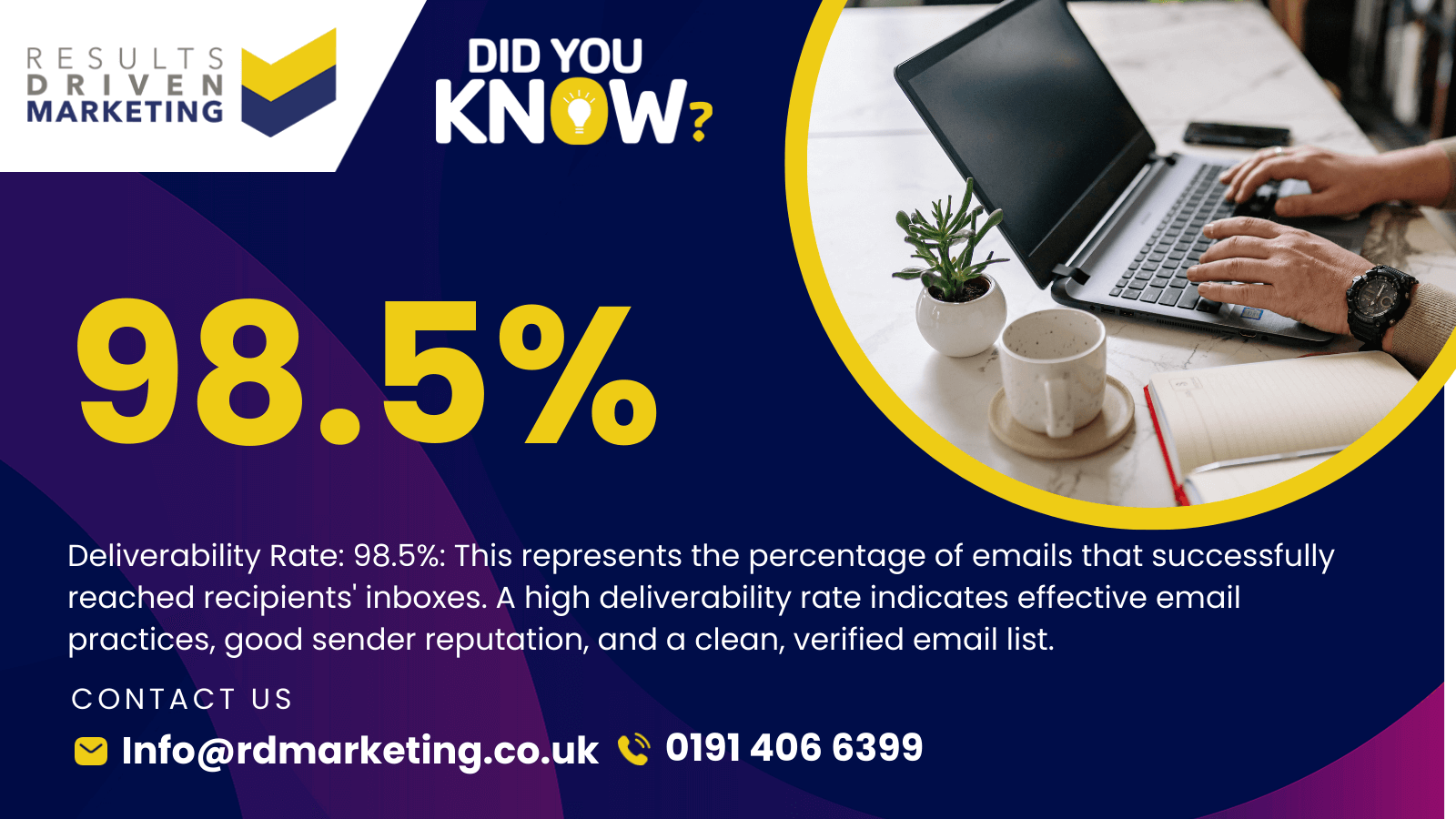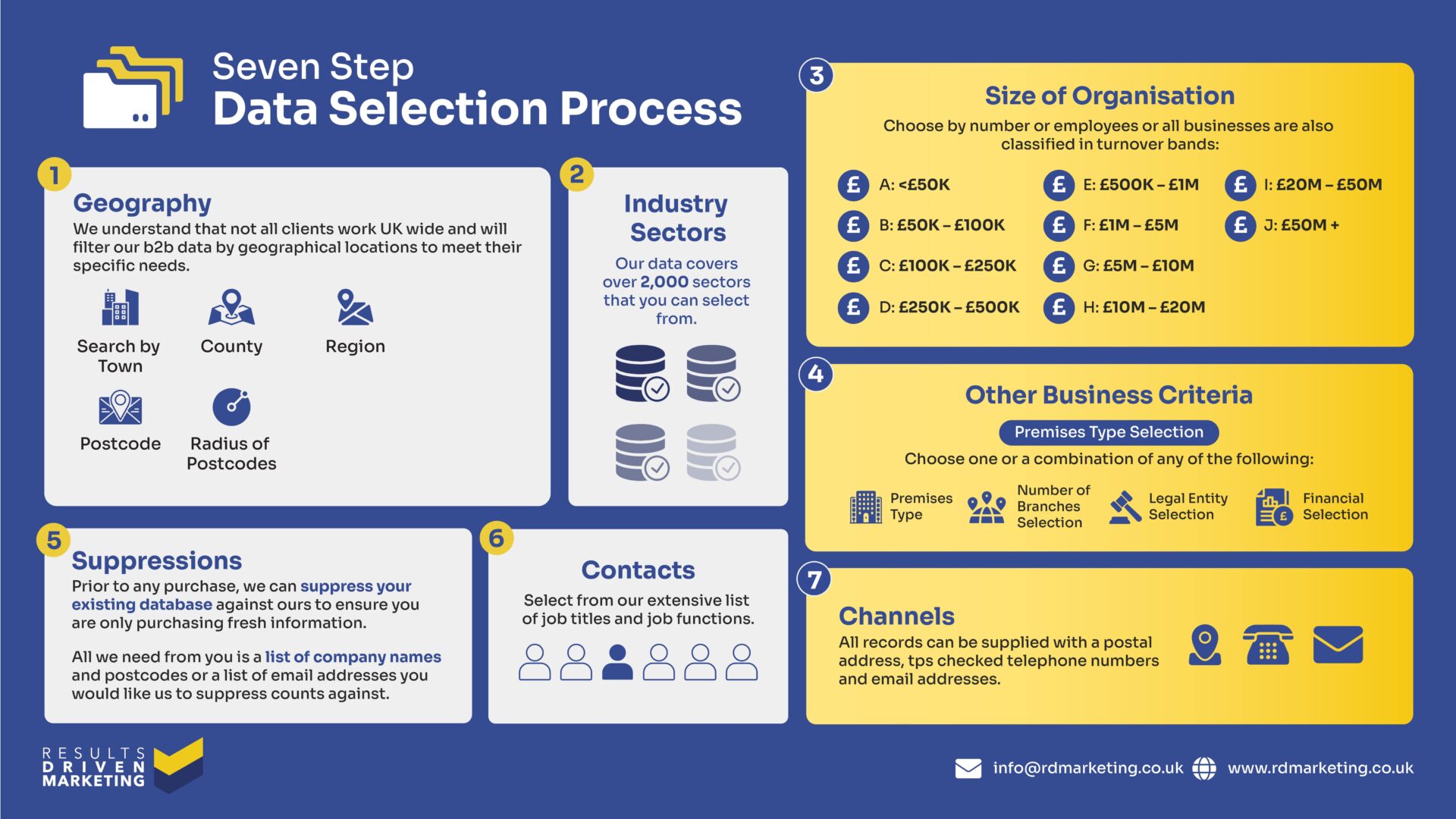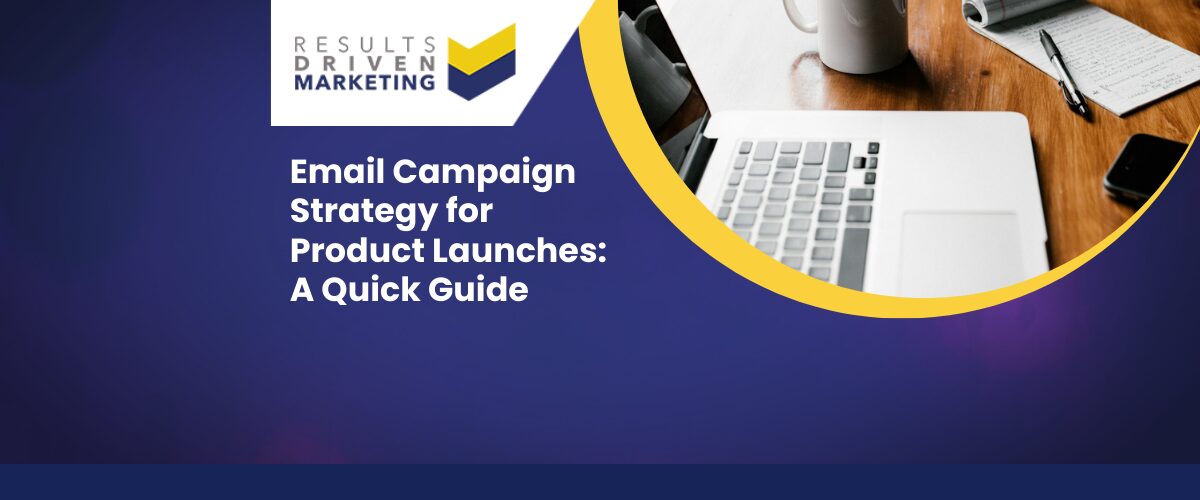
5 Key Components of an Effective Email Marketing Report
A well-structured email campaign report is the foundation of any successful email marketing strategy. Without clear insights into email performance metrics, businesses risk sending emails blindly, without understanding what’s working and what needs improvement. A good report doesn’t just list numbers—it provides actionable insights that help refine future campaigns, boost engagement, and maximize return on investment.
When businesses take the time to analyze an email campaign report, they can:
- Identify patterns in open rates, click-through rates (CTR), and conversions
- Optimize subject lines, email content, and call-to-action (CTA) placement
- Improve email deliverability by monitoring bounce rates and avoiding spam traps
- Understand audience engagement and adjust messaging accordingly
Marketers using high-quality email address list data can further improve their campaign performance by ensuring their emails reach the right audience. Businesses investing in Email Address List Data see better engagement and lower bounce rates, making their reports even more effective.
Table of contents:
Component 1: Deliverability and List Health
Deliverability is where it all begins in email marketing. If your emails aren’t making it into your recipients’ inboxes, the rest of the campaign metrics don’t stand a chance.
Deliverability essentially measures the success rate of your emails reaching inboxes instead of getting bounced, filtered as spam, or rejected. This metric is the foundation of any effective email campaign report, as it directly impacts open rates, engagement, and ultimately, conversions.
Understanding Deliverability in Your Email Campaign Report
An email campaign report should closely examine deliverability indicators, as they signal your emails’ reach and effectiveness. Here are some key metrics to include:
- Bounce Rates: These reflect how many emails fail to reach a recipient’s inbox, often due to incorrect addresses or closed accounts. High bounce rates suggest that your list may need a cleanup. Regular list hygiene can help ensure your database is reliable and responsive.
- Spam Complaints: These occur when recipients flag your emails as spam, which can severely impact your deliverability and sender reputation. Monitoring and minimising spam complaints is essential for long-term email success.
- List Growth or Shrinkage: Tracking whether your email list is growing or shrinking over time provides insight into the quality of your targeting and audience engagement.
List Hygiene and Its Role in Deliverability
One of the best practices in maintaining good deliverability rates is list hygiene.
This means routinely removing inactive subscribers, correcting typographical errors in addresses, and making sure only valid, responsive contacts remain on your list.
Clean, up-to-date data not only boosts deliverability but also improves the relevance of your campaign metrics.
For example, if you’re running a campaign targeting international markets, maintaining a high-quality, accurate International Email List will help improve deliverability.
At RD Marketing, we offer several services to help you enhance your list health. Our Data Cleansing Services can assist in removing outdated information, correcting errors, and enhancing the quality of your email data.
Additionally, our CTPS Checker can help verify that your contacts are opted-in, further ensuring that your messages reach only engaged recipients.
Deliverability Insights for Actionable Email Campaign Reports
In an effective email campaign report, deliverability metrics provide actionable insights that help refine audience engagement strategies.
By tracking and analysing these indicators, marketers can identify problematic areas early on, such as a sudden increase in bounce rates, and address them before they affect the campaign’s broader success.
In summary, deliverability and list health are foundational to every email campaign.
When creating your next report, consider how these insights can guide your approach, helping you reach your audience more effectively and lay a solid foundation for success in your email marketing strategy.
Component 2: Open and Click-Through Rates (CTR)
In any email campaign report, open and click-through rates (CTR) are crucial engagement metrics that tell you how effectively your message captures and retains audience attention.
These numbers reveal how many recipients are interacting with your content, indicating the level of interest and engagement your emails generate.
When analysed correctly, open and CTR data can provide valuable insights into campaign performance, helping marketers fine-tune future campaigns to resonate better with their audience.
Understanding Open and Click-Through Rates in an Email Campaign Report
Open Rate: The open rate measures the percentage of recipients who open your email. This metric is a direct reflection of your subject line’s appeal, your brand’s familiarity, and the timeliness of your email.
A high open rate often signals that recipients are interested in your content or find value in your offerings.
Click-Through Rate (CTR): CTR shows the percentage of recipients who clicked on a link within the email.
This metric indicates how effectively your email encourages engagement, moving readers to take action. It highlights the relevance of your content, the strength of your calls-to-action (CTAs), and the overall appeal of your message.
Best Practices for Boosting Open and Click-Through Rates
To improve these metrics, consider the following techniques:
- Optimising Subject Lines: Your subject line is often the first impression of your email. Try A/B testing different subject line styles to see what resonates most with your audience. Short, personalised subject lines often yield higher open rates by capturing attention quickly and directly.
- Personalisation: Incorporate the recipient’s name or past purchase history into the subject line or email body. Tailored messages make the recipient feel valued and can drive up open and click rates.
As well as….
- Crafting Effective CTAs: Place clear and compelling CTAs in prominent positions to drive clicks. Use active language like “Discover More” or “Get Started Now” to encourage immediate action.
- Email Layout and Design: Ensure your email layout is clean and mobile-friendly, as an increasing number of users access emails on mobile devices. A visually appealing design that’s easy to navigate can significantly increase click-through rates.
If you’re looking to reach the right audience and maximise the impact of your campaigns, using accurate, high-quality B2B Data and Telemarketing Data can make a substantial difference.
Tailoring your data to target specific segments can lead to improved engagement and, ultimately, a stronger email performance.
Comparing Open and CTR Rates to Industry Benchmarks
A valuable part of any email campaign report is benchmarking your metrics against industry standards. Comparing your open and CTR rates to averages within your sector can help contextualise your results, allowing you to gauge whether your performance is on track.
It also serves as a reference point for setting realistic campaign goals and improving over time.
Tools and services like our Email Marketing Management Services can simplify the process of tracking and analysing these metrics, offering in-depth reporting that aligns with industry benchmarks.
Incorporating Open and CTR Metrics into Your Email Campaign Strategy
Regularly monitoring open and CTR rates in your email campaign report empowers you to adapt your strategy and engage your audience more effectively.
By implementing data-driven changes based on these insights, you’ll be able to fine-tune your approach, boost recipient engagement, and drive better outcomes for future email campaigns.
Component 3: Conversion Metrics
In email marketing, the ultimate goal is not just getting your emails opened or clicked but actually inspiring recipients to take meaningful actions, such as signing up for a service, making a purchase, or filling out a form.
These actions, known as conversions, are critical indicators of how effectively your email campaign drives real results. That’s why, in any robust email campaign report, conversion metrics take center stage as they directly reflect the return on investment (ROI) of your efforts.
The Role of Conversion Tracking in Your Email Campaign Report
Conversion metrics in an email campaign report demonstrate the extent to which your campaign aligns with and achieves its objectives. By setting up and tracking conversions, you can answer questions like:
Did your email drive the desired action? Was the offer or CTA enticing enough? This data forms a clear picture of the success of your campaign and helps you optimise future strategies.
Here are some common types of conversions to track:
- Sign-Ups: Whether it’s for a newsletter or a webinar, sign-ups indicate that recipients find your content valuable enough to subscribe.
- Purchases: For e-commerce businesses, tracking purchases generated by an email campaign directly ties your efforts to revenue.
- Downloads: If you’re promoting a resource (like a whitepaper or case study), download metrics reveal the interest in your content offering.
How to Set Up Conversion Tracking and Analyse Data
Tracking conversions begins with establishing clear goals for each campaign. Use a tool like Google Analytics or a dedicated Email Marketing Management Service to set up tracking.
By tagging links and using specific landing pages for each campaign, you can get granular insights into which emails drive conversions and identify points in the customer journey where users drop off.
To evaluate whether your campaign met its objectives, compare conversion rates to your original targets.
If your goal was to increase sign-ups by 10%, analyse your email campaign report to see if you reached this mark. This approach provides a clear, results-focused evaluation of your campaign.
Tips for Increasing Conversion Rates
If you’re looking to enhance your conversion rates, consider these best practices:
Targeting the Right Audience: High-quality, targeted data ensures your emails reach those who are most likely to convert. Using Consumer Data or Telemarketing Data can improve targeting precision and drive up conversions.
Personalisation: Tailoring content to your recipients, such as including their name or purchase history, can make emails feel more relevant and engaging. This personal touch often leads to higher conversion rates.
Value-Driven Messaging: Emphasise what the recipient will gain from taking action. Craft CTAs and content that communicate the unique value, whether it’s a discount, an exclusive download, or a limited-time offer.
Optimising the Landing Page: A well-designed landing page is essential for converting clicks to actions. Ensure your landing page aligns with the email’s message and makes it easy for recipients to take the next step.
Our Data Enrichment Services can also support your conversion strategy by enriching your database with additional details about your leads. More detailed information about your audience allows for greater personalisation and more impactful campaigns.
Interpreting Conversion Metrics in Your Email Campaign Report
By closely tracking conversions, you’ll gain actionable insights into what motivates your audience and how effectively your emails drive results.
Over time, analysing conversion data can help you refine your approach and focus on strategies that deliver the best outcomes.
Conversion metrics, when interpreted properly, are the backbone of a successful email campaign report, helping you continuously improve and generate meaningful results.
Component 4: Engagement Duration and Unsubscribes
A solid email campaign report goes beyond tracking just clicks and conversions; it also dives into how long recipients engage with your content and whether they stay subscribed.
Engagement duration and unsubscribe rates are two metrics that offer a deeper understanding of your campaign’s effectiveness, helping you fine-tune your strategy to keep audiences interested and involved.
The Duration of Engagement: A Quality Measure of Content Effectiveness
Engagement duration, or the amount of time recipients spend viewing your email, is a quality measure indicating how relevant and captivating your content is to your audience.
A higher engagement duration often signals that readers are genuinely interested in what you’re sharing, while a shorter duration may suggest that the content, layout, or overall design isn’t quite hitting the mark.
Here’s why engagement duration is important in your email campaign report:
Content Effectiveness: If recipients spend more time on your email, it generally means that they’re reading and absorbing the message. Content that resonates with your audience is key to longer engagement.
Layout and Visual Appeal: Sometimes, even well-written content may fall flat if the email layout is cluttered or hard to navigate. A clean, mobile-friendly design keeps readers engaged for longer periods, giving your message the attention it deserves.
Relevance to Audience Needs: Ultimately, your email’s value is judged by how well it speaks to the audience’s needs. By comparing engagement duration across campaigns, you can see which topics and formats are more engaging and make adjustments as needed.
To maximise your engagement levels, consider refining your audience data. With targeted, up-to-date Direct Mail Data or Consumer Data, you can ensure that your emails are reaching those who are more likely to engage.
Understanding Unsubscribe Rates in an Email Campaign Report
While nobody enjoys seeing unsubscribe rates go up, they’re an essential part of a complete email campaign report.
A manageable unsubscribe rate indicates that your emails are mostly resonating with your audience. However, a spike in unsubscribes can signal a disconnect between your content and audience expectations.
Here’s what unsubscribe rates can reveal:
- Campaign Relevance: Higher-than-normal unsubscribes can mean that your message is no longer hitting home. For instance, sending promotions to an email list that’s more interested in updates or insights could result in audience drop-off.
- Email Frequency: Overwhelming recipients with too many emails often results in unsubscribes. Striking a balance between staying top-of-mind and overwhelming readers is key.
- Content Fatigue: If your content becomes repetitive, recipients may start opting out. Rotating in fresh topics or new email formats can help reduce unsubscribe rates.
To proactively manage unsubscribe rates, it’s helpful to refine your targeting. Leveraging a clean, enriched data set, such as one enhanced through our Data Enrichment Services, can allow you to tailor content more closely to your audience’s current interests and reduce the likelihood of opting out.
Flagging Unsubscribes for Further Analysis
When it comes to unsubscribe data, regular analysis is essential. If unsubscribes are within a normal range, it’s often best to monitor without concern.
However, sudden increases should prompt a closer look. Consider breaking down unsubscribes by specific campaigns or segments, as this can reveal if certain messages or targeting strategies are responsible.
By carefully monitoring engagement duration and unsubscribe rates in your email campaign report, you can make data-informed decisions to keep your audience engaged and subscribed.
These metrics offer nuanced insights that can guide you toward creating campaigns that not only capture attention but also foster long-term engagement.
Component 5: Campaign Comparison and Trends
One of the most powerful insights an email campaign report can offer lies in comparing current results with those from past campaigns.
This trend analysis is crucial for spotting patterns, understanding audience behavior over time, and refining strategies based on real performance data.
By regularly reviewing and comparing each email campaign report, you can leverage these insights to make more informed, data-driven decisions.
The Value of Trend Analysis in Your Email Campaign Report
Campaign comparison is about more than just tracking metrics in isolation. It’s about spotting trends across various email performance indicators, such as open rates, click-through rates (CTR), and conversions.
Recognising these patterns helps you adapt and optimise your strategy, moving you closer to a marketing approach that consistently performs.
Trend analysis can answer questions like:
- Are open rates steadily increasing, decreasing, or staying flat? If open rates are declining, you might need to revisit your subject lines or targeting to reignite audience interest.
- Is CTR improving over time? Analysing CTR trends can reveal how effective your CTAs and content structure are, allowing you to refine them as needed.
- Are conversions influenced by specific times of the year? Identifying seasonal trends or certain days of the week that drive higher conversions can guide you in timing future campaigns for maximum impact.
Using Historical Data for Strategic Adjustments
Observing patterns in historical data can be a game-changer. If you notice that engagement increases in certain months, you might prioritise larger campaigns during these periods.
For example, data could show that B2B customers are more responsive to your emails at the start of the fiscal year. Or, perhaps specific products or offers resonate more during holiday seasons.
Using insights from trend analysis, you can tailor both the timing and content of your emails to align with known audience behaviors.
If you’re aiming to elevate the quality of your list for enhanced targeting, Data Cleansing Services and Data Enrichment Services can help refine and enhance the accuracy of your database. A clean, enriched dataset will provide more reliable trend insights.
Examples of Actionable Insights from Trend Observation
Here are a few examples of the actionable insights you can gain from observing trends in your email campaign report:
- Optimal Send Times: You may find that engagement spikes on certain days or times, providing you with a clear window to maximise reach.
- Content Preferences: Over time, you might see that emails with specific content themes—such as industry news or how-to guides—receive higher engagement, which could inform future content planning.
- Seasonal Engagement Shifts: Some audiences may engage more around certain times of the year. Recognising these patterns allows you to focus your efforts strategically, maximising impact during peak times.
When using our Email Marketing Management Services, you’ll have access to enhanced reporting tools that make it easy to track and compare campaign performance over time, helping you spot trends and adjust accordingly.
The Role of Regular Campaign Comparison in Long-Term Success
Trend analysis in your email campaign report is not a one-time task; it’s an ongoing process that evolves as your strategy grows.
By consistently comparing performance metrics and adapting based on these observations, you’re able to create campaigns that are both relevant and effective. As trends emerge, you can fine-tune your strategy, ensuring that each new campaign is more impactful than the last.
Conclusion
Building a truly effective email campaign report requires understanding and integrating several key components that bring clarity to your performance data. By focusing on deliverability and list health, you lay a foundation for strong engagement by ensuring your emails consistently reach the intended audience.
Tracking open and click-through rates (CTR) gives you a pulse on audience interest, highlighting which content and CTAs resonate most.
Conversion metrics reveal the real ROI of your efforts, directly linking engagement to business goals. Keeping an eye on engagement duration and unsubscribe rates provides insight into how your content holds attention and aligns with audience needs.
If you’re ready to take your email marketing to the next level, RD Marketing can support your journey. From B2B Data and Direct Mail Data to Telemarketing Data and Email Address List Data, we provide the quality data solutions essential for targeting the right audience.
Our Data Cleansing Services and Data Enrichment Services ensure your lists are always accurate and relevant, while our Email Marketing Management Services simplify tracking, benchmarking, and reporting.
Who are we?
Thinking about “how do I buy data“?
Providing b2b database solutions is our passion.
Offering a consultancy service prior to purchase, our advisors always aim to supply a database that meets your specific marketing needs, exactly.
We also supply email marketing solutions with our email marketing platform and email automation software.
Results Driven Marketing have the best data of email lists for your networking solutions as well as direct mailing lists & telemarketing data in telemarketing lists
We provide data cleansing and data enrichment services to make sure you get the best data quality.
We provide email marketing lists and an international email list for your business needs.
At RDM We provide b2c data as we have connections with the best b2c data brokers.
A good quality b2b database is the heartbeat of any direct marketing campaign…
It makes sense to ensure you have access to the best!
Call us today on 0191 406 6399 to discuss your specific needs.
Results Driven Marketing
0191 406 6399











